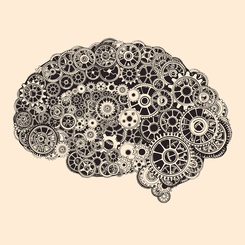Time is money. In our highly competitive reality, companies and managers, in order to survive, are often competing with time and running after money. They cannot take the chance to wait and see, to evaluate the consequences of the innovations they introduce on the market. In this article, ESSEC Professor Xavier Pavie reflects on the notion of responsible innovation.
Anticipation and Awareness Are Key
There is a plethora of innovation opportunities out there and all of them are waiting to be seized. It is true that scientific and technological progress has made them easy (or at least, easier) to grasp. Unfortunately, these opportunities do not necessarily benefit customers or society in the long run given the fact that they do not take into account the impact and potential threat to society. Thus, developing a deeper understanding of responsibility in the field of innovation is crucial. In fact, responsibility should not be limited to the scope of social business and micro-projects, it should be considered by managers as a major determinant to innovation; it should be integrated into both the innovation models and the decision-making process.
The Road to Opportunity is Paved with Risks
The word “innovation” comes from the latin innovationem, noun of action from innovare, in - novare: “in” for inside, “novare” for change. It is important to know that innovation was initially seen as the process that renews something that exists (or not) and is commonly assumed as the introduction of something new. Newness often implies uncertainty and uncertainty implies risks. Innovating is good for business but innovation opportunities, while being numerous, might present a risk and threaten the integrity of ecosystems upon which human society depends.
Incremental and Disruptive
While incremental innovation has a minor impact on the market and does not radically change conditions of use, disruptive innovation consists of designing for a different set of consumers. Disruptive innovations have by nature an unexpected impact on the market. They usually imply a radical technical or technological change.
Diffusing Innovations
Trapped between visionaries (early adopters) and pragmatists (early majority), it is difficult to predict how the “personal story” of a product (or service) will unfold. In order to penetrate the market, innovations need to be adopted by pragmatists. But pragmatists are hard to convince, they need references and they do not necessarily trust early adopters.
In terms of responsibility and for the sake of responsible innovation, two specific challenges have to be addressed as far as the two categories of disruptive innovation are concerned:
-
Low-end disruptions allow a wide range of people to access a product/service they could not previously afford. However, this generalization could pose a threat to the global balance. This is just one example of many but is it really wise to widen access to cars in developing countries given the damages caused by CO2 emissions?
-
New-market disruption is about developing new markets. On the one hand, it is difficult to forecast the results, on the other, they can take us by surprise. But one has to keep in mind that even if we knew if the product (or service) would be adopted, uncertainty as to the consequences of disruptive innovations would remain.
The Knowledge Gap
Disruptive innovations rely on new techniques and technologies, for which scientific knowledge remains limited, and for which all consequences cannot always be foreseen.
Let us look at nanotechnologies. They are widely used in many consumer products even though, at this point, their health and environmental impact cannot be measured. They are an example of the dilemma innovators face: choosing between the economic potential of a technology and different ethical guidelines such as the inability to anticipate the consequences. It is urgent that responsibility become a key element of the innovation process.
As far as incremental innovation goes, responsibility does not necessarily appear as an important feature to be considered: it is indeed possible to anticipate the adoption of incremental innovation using a traditional lifecycle and projections based on the result of previous launches. However, if within 8 years we have more than 20 different iPods, it is legitimate to wonder whether these products are sustainable due to their shortened product life.
Is Catalytic Innovation the Answer?
Catalytic innovations are a subset of disruptive innovations focusing on social development. Let us look into the example of Eko in India. It reveals how using a very simple interface on mobile phones provides access to basic banking services to a large part of Indian society. That is all very well but social innovations account for a very small part of responsible innovations. Responsible innovations cover a much larger scope and social is definitely not a synonym of responsible.
How Decision-makers Understand and Implement Responsibility: Results of a Survey
The results of the survey [1] show that decision-makers have a clearer vision on the potential impacts of innovations launched by their company in the short-term rather than in the long-term.
-
In the short-term, 29% of decision-makers declare they can anticipate precisely the impacts on society, and 23% the impact on the environment;
-
In the medium-term, only 16% have a precise idea about the social impact and 13% about the environmental one;
-
In the long-term, only 9% are able to anticipate the social impacts and 8% those on the environment.
Despite the decision-makers’ inability to anticipate the precise social impact, even in the short-term, almost 47% of them choose to innovate anyhow no matter the environmental impact.
Harder, Better, Faster, Stronger
Companies receive a strong demand from markets for quicker product or service development. As CEOs and managers are rewarded for making quick(er) decisions in complex situations, as they are selected for their ability to act despite uncertainty, they no longer devote enough time for in-depth study and review before making choices. Unfortunately, if they do not act, someone else will.
Among the top leadership qualities, creativity is ranked at the top position, followed by integrity and global thinking. Focus on sustainability, humility and fairness stand at the bottom of the list (IBM 2010). The more creative the leader, the quicker the decisions and... the greater the need for responsibility to counterbalance the negative effects. Therefore, leaders, being aware of time constraints and market pressure, should keep responsibility as a concern in the process. Nonetheless, three major issues can be identified and should be questioned:
-
Market demand and the mass consumption of innovative products as an accelerator of innovation processes;
-
The complexity of forecasting and anticipation: an in-depth analysis of all consequences should be performed before the implementation;
-
The identification of new societal risks: innovation can cause major damage to the people and the planet. Managers should be able to step back in case of adverse impacts.
−−−
[1] The survey was initially sent to a large range of managers, mostly from French companies, and with an interest in innovation. Over a period of 4 months, between January and April 2011, 62 people out of 78 respondents completed the entire survey. There were 5 “profile” questions: Gender, Company size, Function, Sector of the company and Innovation decision-making involvement.









